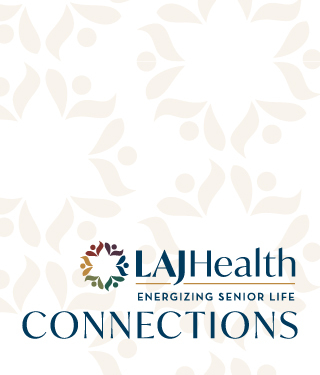Purim Brings Joy—and Relief—to the Los Angeles Jewish Home


Purim Brings Joy—and Relief—to the Los Angeles Jewish Home
The holiday of Purim began at sundown on February 25th—but at the Los Angeles Jewish Home, the festivities had already started. "Purim comes midway through the Jewish month of Adar, and our tradition says it's a month for increasing joy," says Rabbi Karen Bender, Skirball director of spiritual life at the Jewish Home. "It's a mitzvah [good deed] to bring levity and happiness for the entire month, so I make it my goal to bring laughter to our residents throughout."
Purim tells the story of Mordechai and Esther, who work together in ancient Persia to stop the evil Haman [a central advisor to the king] from murdering all of the country's Jews. Their successful campaign results in the Jews being saved—and in Haman dying on the very gallows he has constructed for their killing.
"To celebrate the foiling of Haman's plan, we dress up in costume and engage in merrymaking," Rabbi Bender says. "Of course, with COVID, we've had to improvise our celebrations at the Jewish Home—like when I walked around the halls wearing an N-95 mask with a Groucho nose and glasses on top. It looked pretty silly; residents kept asking me if I needed a second mask for the second nose!"
Getting Jewish Home residents ready for the holiday did more than just spread happiness, Rabbi Bender says. "We connected our seniors with the calendar by reminding them of upcoming festivities. It gives them a sense of rootedness, and it allows them to have something to look forward to."
At the Jewish Home, Purim itself—which coincides with Adar's full moon—brought a flurry of activity. "On the eve of Purim, thanks to our amazing dietary staff, residents were treated to a delicious Persian meal, in honor of where the story takes place, along with a hamantaschen [a special cookie in the shape of Haman's hat] for dessert," Rabbi Bender says. "The next morning, we distributed dress-up masks and noisemakers to residents, which they used during our holiday broadcast on the Jewish Home's in-house TV station."
The broadcast featured videos and songs, as well as a reading of the entire Megillah [the Book of Esther, which relates the Purim tale]. "Residents were able to participate and follow along, knowing our entire community is doing it together," Rabbi Bender says. "What's also great is that you don't have to be Jewish to join in. Who doesn't love an uplifting story told through food and song?"
The fun continued throughout the day with programs like a Shushan-themed Nosh & Nibble—a biweekly event where staff dress up in costumes and liven up the hallways of the Jewish Home with snacks and music. In keeping with strict safety protocols mandated by the pandemic, residents stayed in their rooms to maintain social distance. Staff also planned a hallway serenade and a program called "Cookie, Kibbitz, and Joke-Telling," which invited residents to join a conference call to share their favorite jokes with friends. At Eisenberg Village, campus Rabbi Ronald Goldberg helped spread the cheer by walking around dressed as a baseball player.
Behind all the frivolity, Rabbi Bender sees a deeper, more significant meaning. "With the arrival of the vaccine, there's a real sense of relief at the Jewish Home right now, and the Purim story also ends with relief: Haman is gone, and the Jews will be okay," she says. "Now that cases of coronavirus are dropping, and with 99 percent of our residents vaccinated, it almost feels like the ‘Haman' from this year is gone."
Although holding the virus at bay still requires Jewish Home residents and staff to be extremely cautious, Rabbi Bender says Purim brings welcome winds of change. "We've all had so much sorrow," she notes. "This year, Adar came just in time."